After a 2 week delay Kara and I finally made it to Antarctica on Friday September 5th. On Thursday we received an e-mail from the US Antarctic Program telling us that we were scheduled to fly south the following day and that we needed to get to the Christchurch airport by 6:45AM Friday morning.
Once we arrived at the airport we went to the Antarctic clothing distribution center, where we had tried on our cold weather gear a couple of weeks ago. Our big orange duffel bags, filled with our cold weather gear, were waiting for us there. For the flight to Antarctica you are required to wear much of this gear – the heavy winter boots, wind pants, parka, gloves, hat and face mask. Much of this I wore over my regular clothes – jeans and a T-shirt.
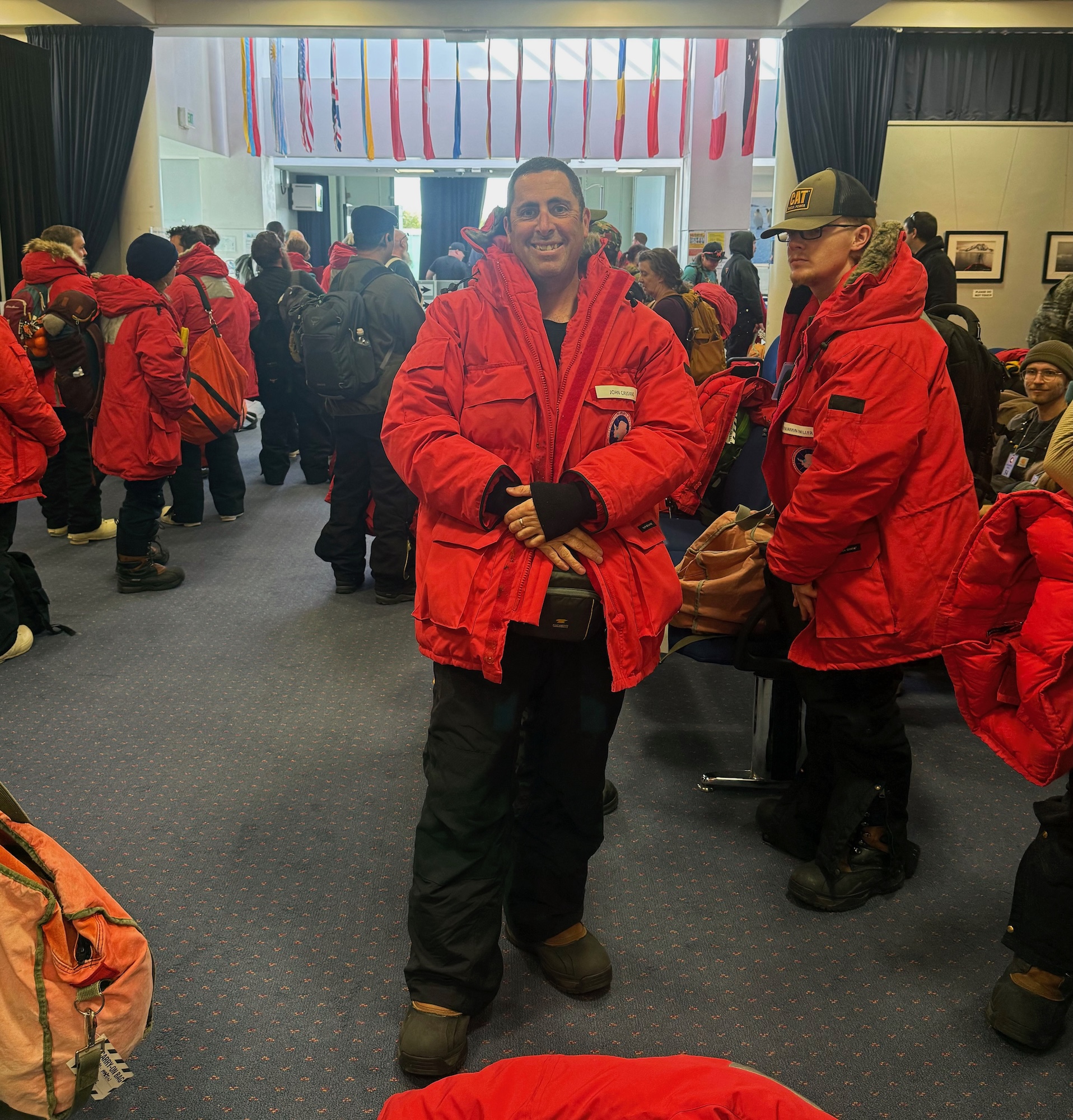
Next, we had to split whatever cold weather gear we weren’t going to wear on the flight and whatever else we were bringing to Antarctica into checked luggage and a “boomerang” bag. If our flight was cancelled before taking off or returned to Christchurch after taking off, known as a boomerang flight, then we’d only get our boomerang bag back with the rest of our checked luggage remaining on the plane. That means that you need to pack your boomerang bag so it contains everything you would need for a few extra days in Christchurch. No one wants to spend several days in Christchurch walking around in nothing but winter boots and cold weather gear.
Once everything was packed as either checked luggage, in the boomerang bag or in a carry on bag we went next door to the Antarctic passenger terminal to check in for our flight, just like you’d do for a regular commercial flight. Here our checked luggage was weighed and security screened. We could check as many bags as we wanted but the total weight had to be less than 85 pounds. For people spending 6 or more months in Antarctica this weight limit can be tough to meet. We also got our boarding passes, which was just a laminated number on a chain we could wear around our neck.
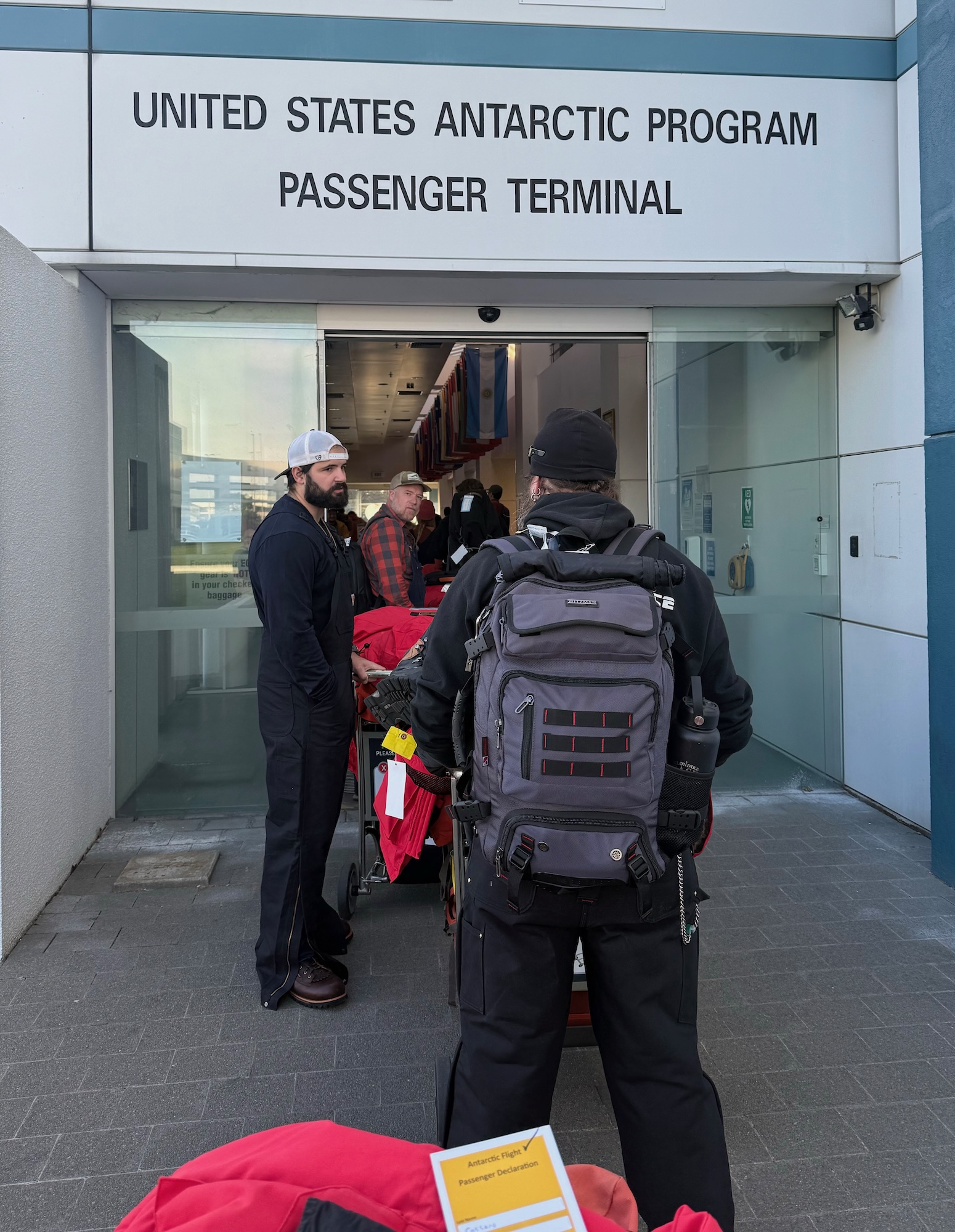
We then had a bit of time to wait before boarding our flight. Many people walked to a nearby grocery store to buy some snacks for the flight or even to buy some fresh fruit to bring to Antarctica, since fresh food is in short supply there. Before boarding our flight we were given a safety briefing about the C-17.
Next, we boarded a bus that drove us to an apron next to one of the runways at the Christchurch airport where the C-17 was parked. As we climbed the steps into the plane everyone was given a bagged lunch – there is no in-flight service on the C-17.
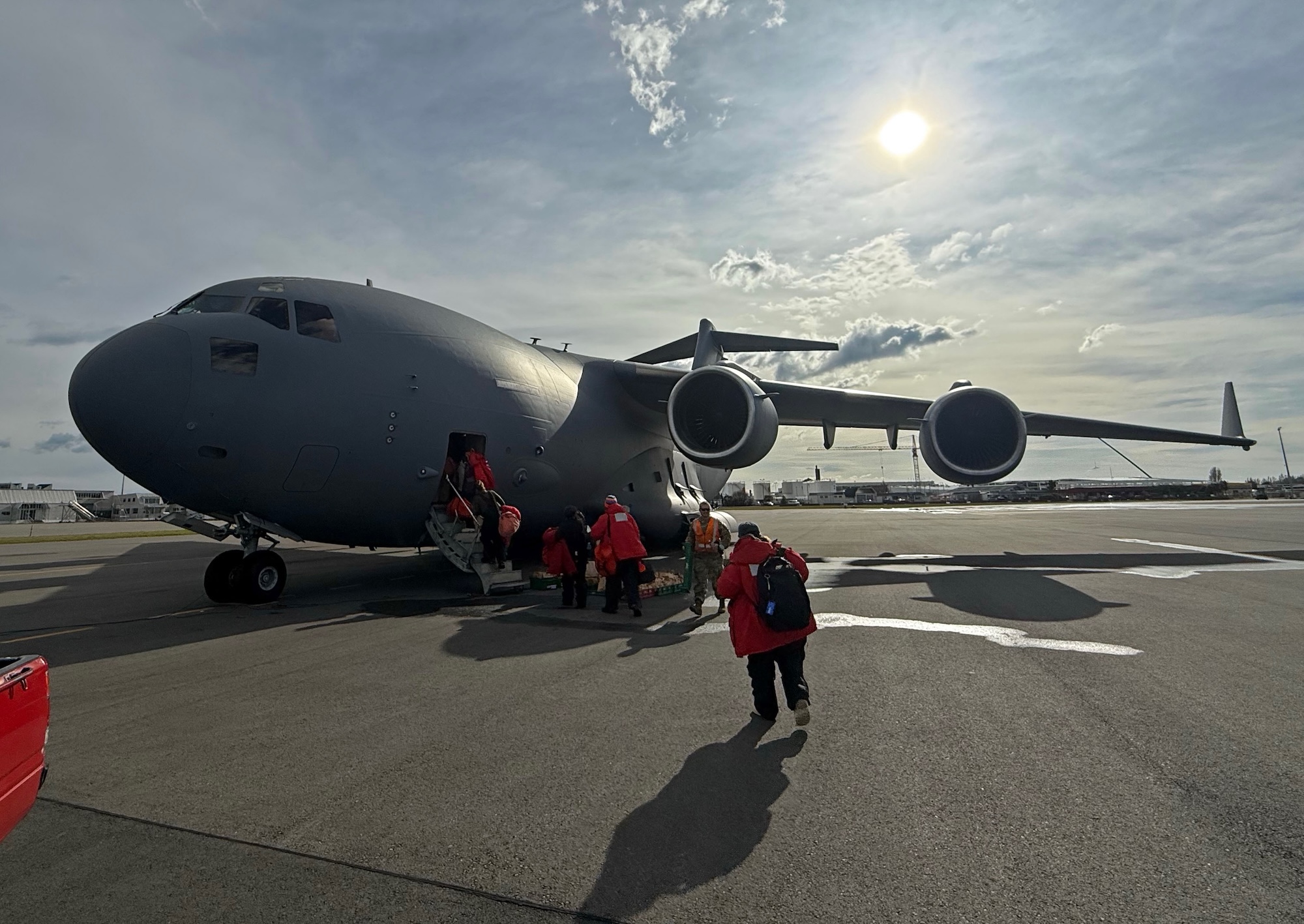
There is no mistaking a military transport plane for a regular commercial airliner. The cavernous inside is designed to haul cargo and troops. Our flight was configured to carry mainly passengers – there were more than 100 people on my flight. It is very loud inside the plane so you need to wear hearing protection or noise cancelling headphones during the flight. No need to worry about the person sitting next to you talking to you while you try to watch your favorite show on your tablet.
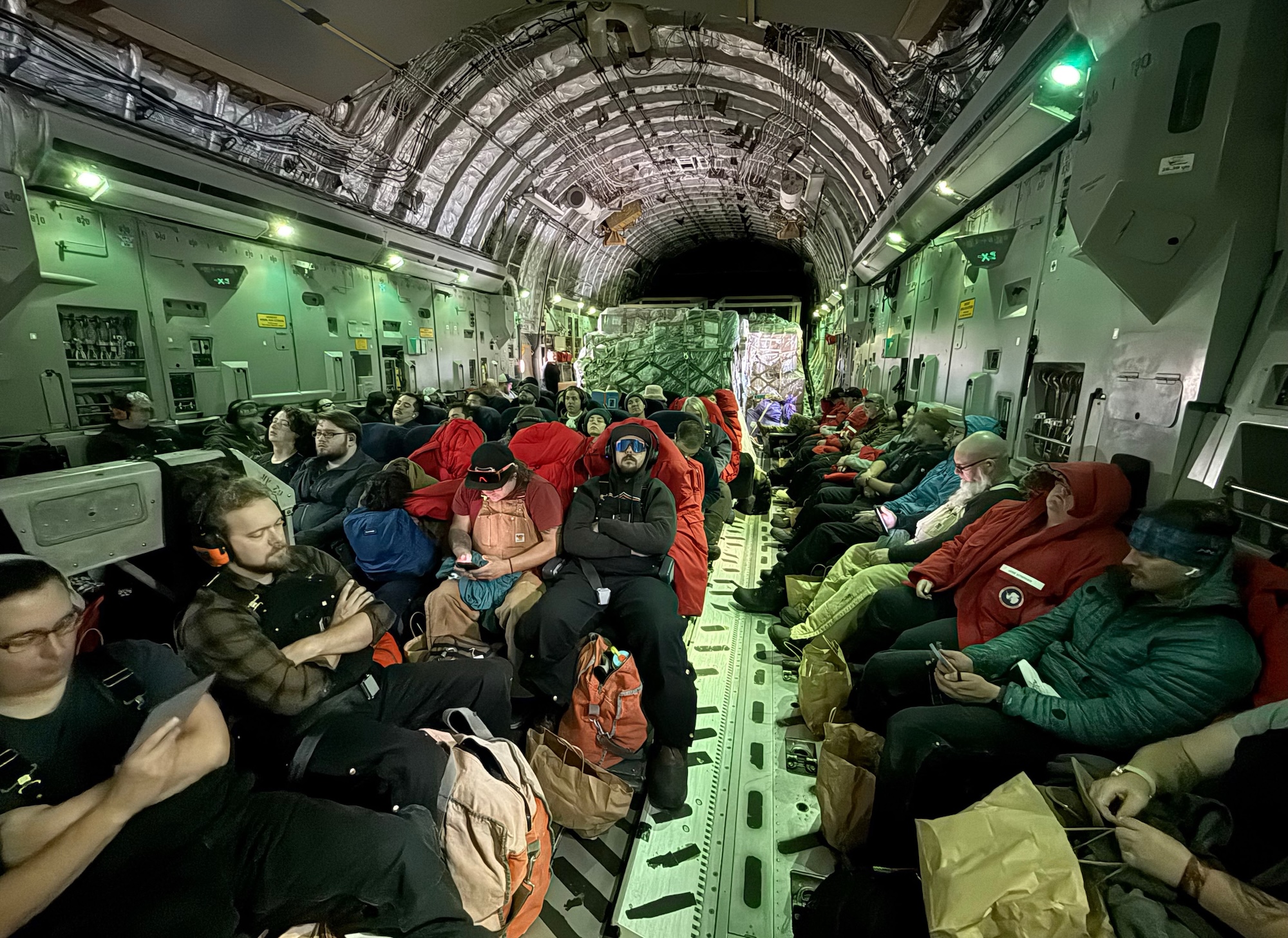
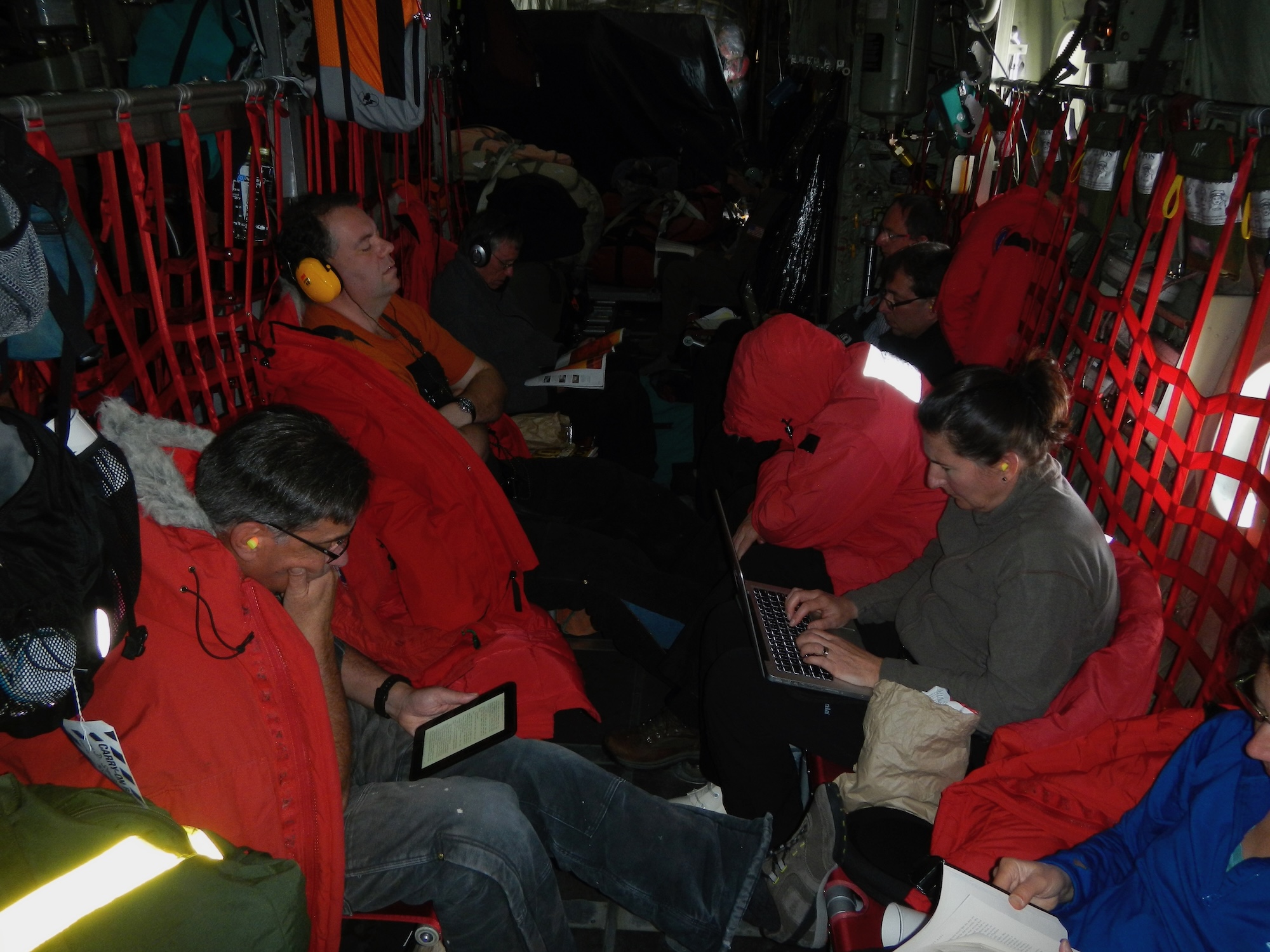
After 4.5 hours of flying the plane began its descent to the Phoenix ice runway outside of McMurdo Station. With a smooth landing and long deceleration on the slippery ice surface we finally came to a stop. Cold air rushed into the plane as the rear cargo hatch was opened letting us know that we were definitely not in New Zealand anymore. It is always an exciting moment when you step out of the dark plane and into the expansive view of Antarctic ice and mountains. For us, our flight landed just before sunset, so the entire landscape was bathed in a beautiful golden light. And the weather was pleasant by late Antarctic winter standards. The sky was clear, the wind was light and the temperature was a relatively mild -10 F. I couldn’t have asked for a better arrival to the frozen continent.
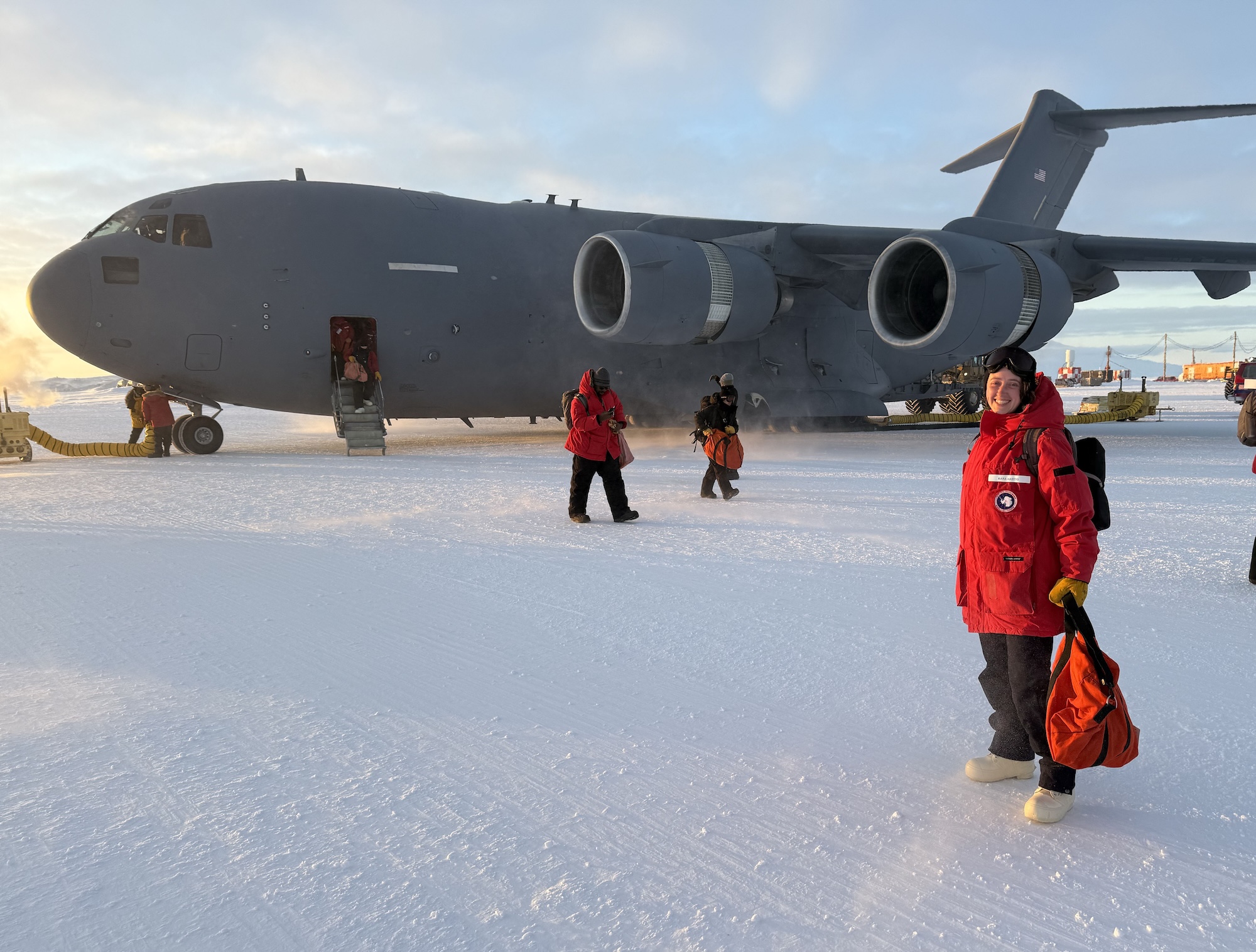
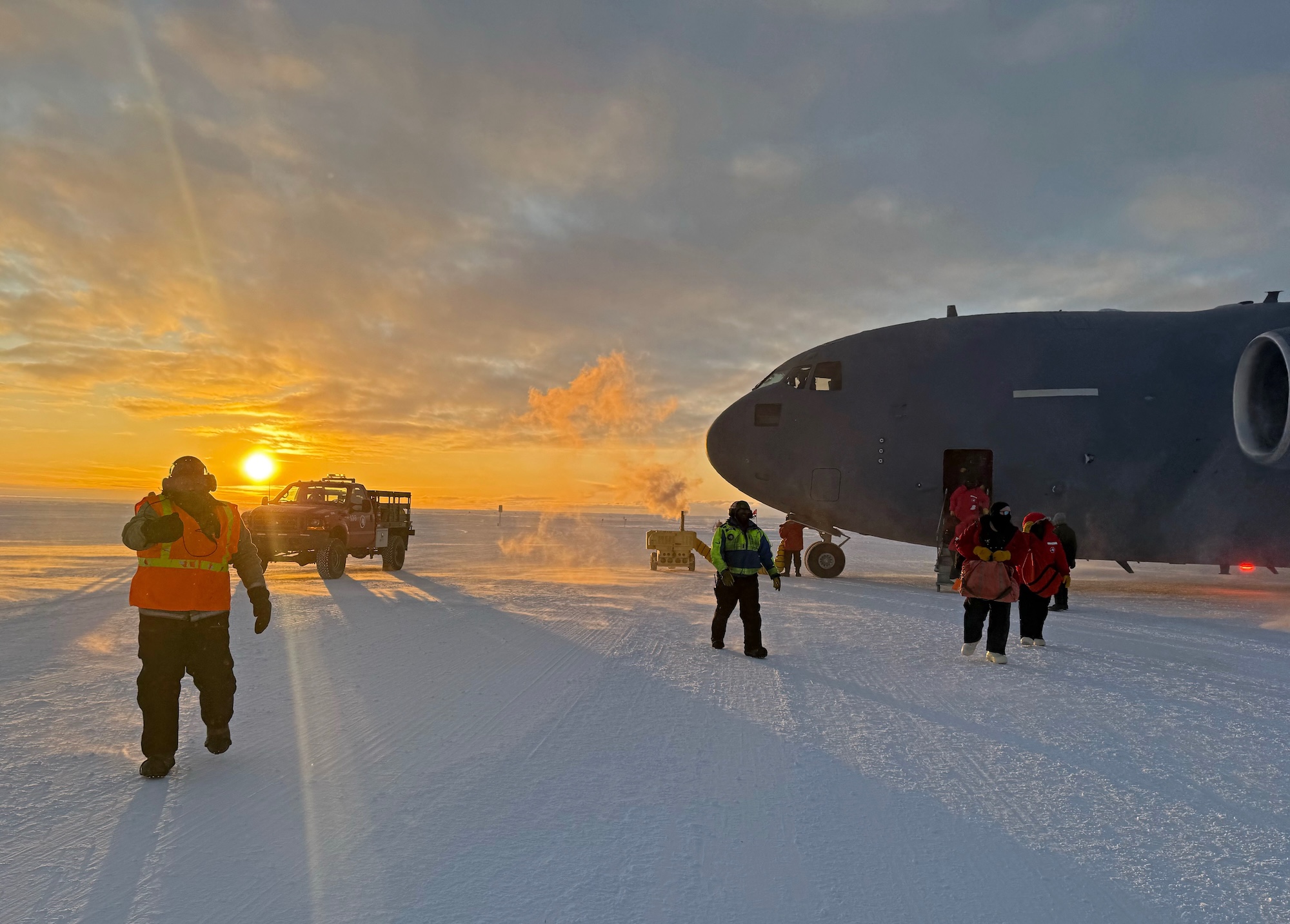
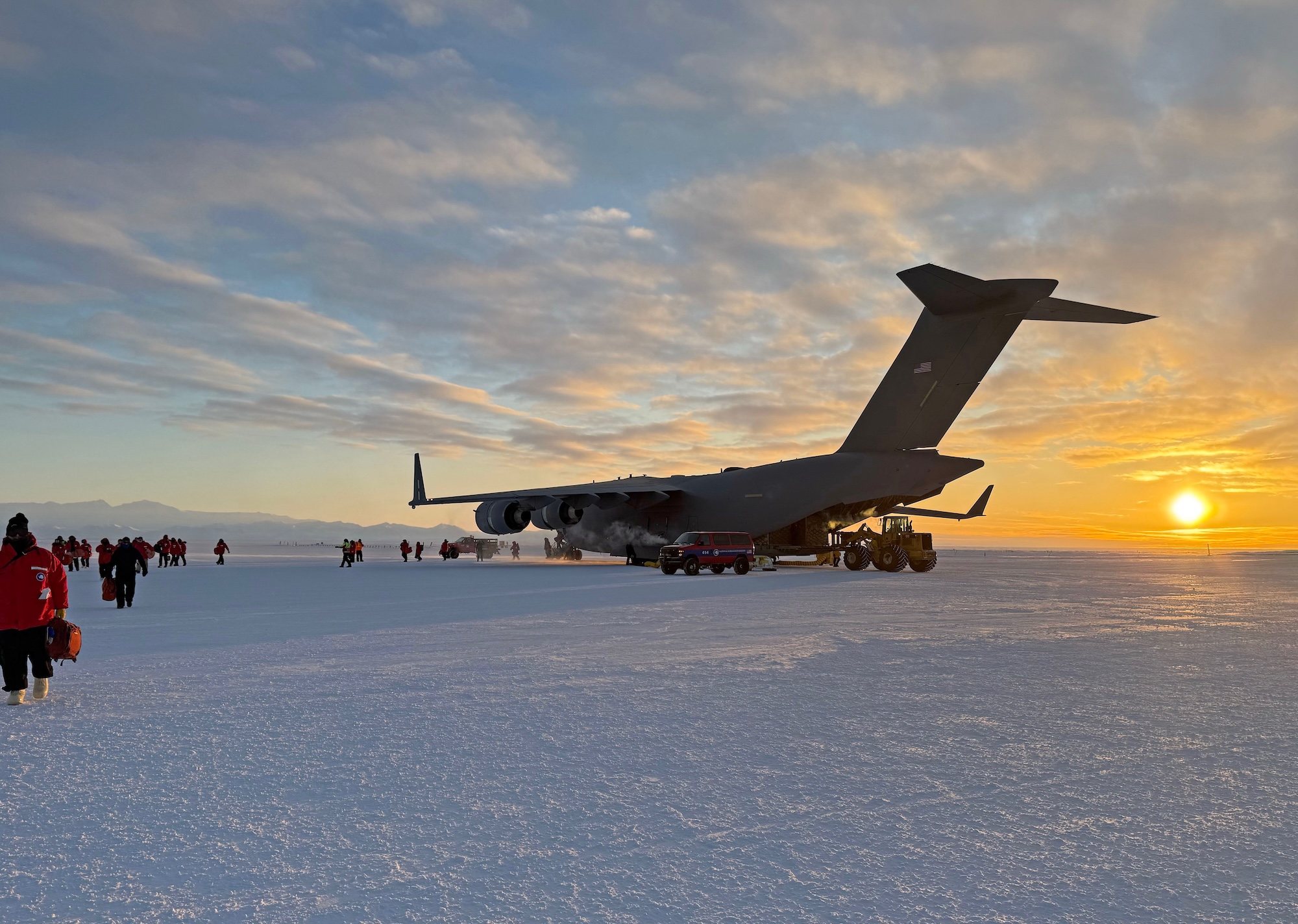
Upon exiting the plane a fleet of vans was waiting to take us on the 40 minute drive to McMurdo. Once we arrived on station we had a 30 minute in-brief orienting us to life in McMurdo. By then it was dinner time so our next stop was the galley, where we’ll be eating all our meals for the next month. After dinner it was a short walk to the luggage handling building to pick up our checked luggage and a stop by the laundry to get clean linens for our beds.
We’ll be spending the next several days completing lots of required training. We also need to wait for our science cargo to arrive before we can begin doing our research drone flights.
Thanks for reading.


Congratulations on getting there! That was a bit of a wait!
Thanks Ted. Yes, definitely a long wait to get down here this time.
Thanks so much, John. It’s so nice to know that a loved one has navigated such a potentially risky trip and to see what it looked like.
So glad you finally got there. I enjoy reading your blogs and all the pictures .
Enjoy
thanks John for the blow by blow description. I learn much from your posts… and welcome to the Antarctic. Hope your field work goes well.
Thanks for the kind comments everyone.
Thanks for sharing, wonderful pictures and text!
I’m enjoying following along on this adventure!
Thanks for sharing the nitty-gritty practicalities – they make for interesting reading and will sure be useful for researchers (and others) heading off to Antarctica for the first time.